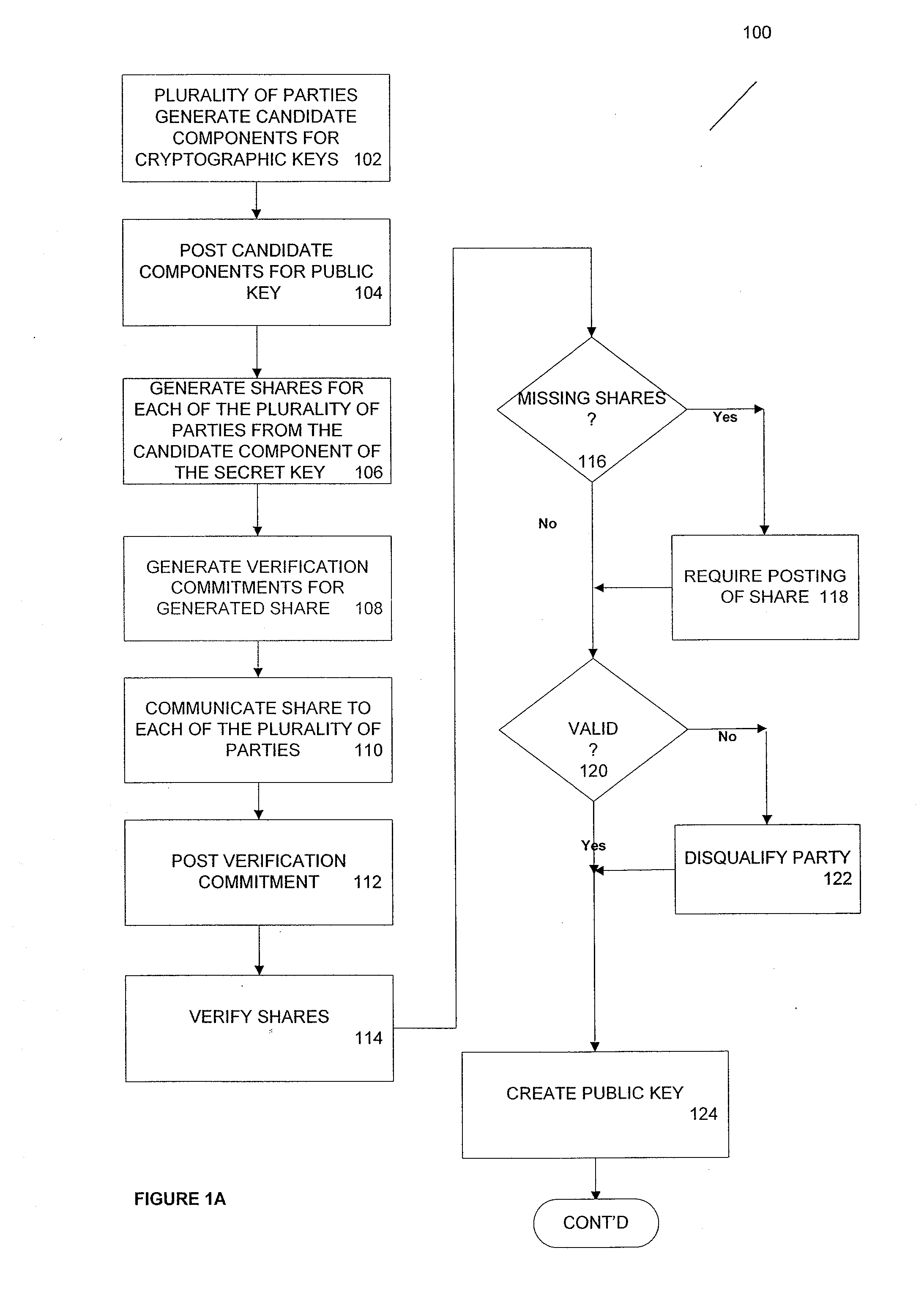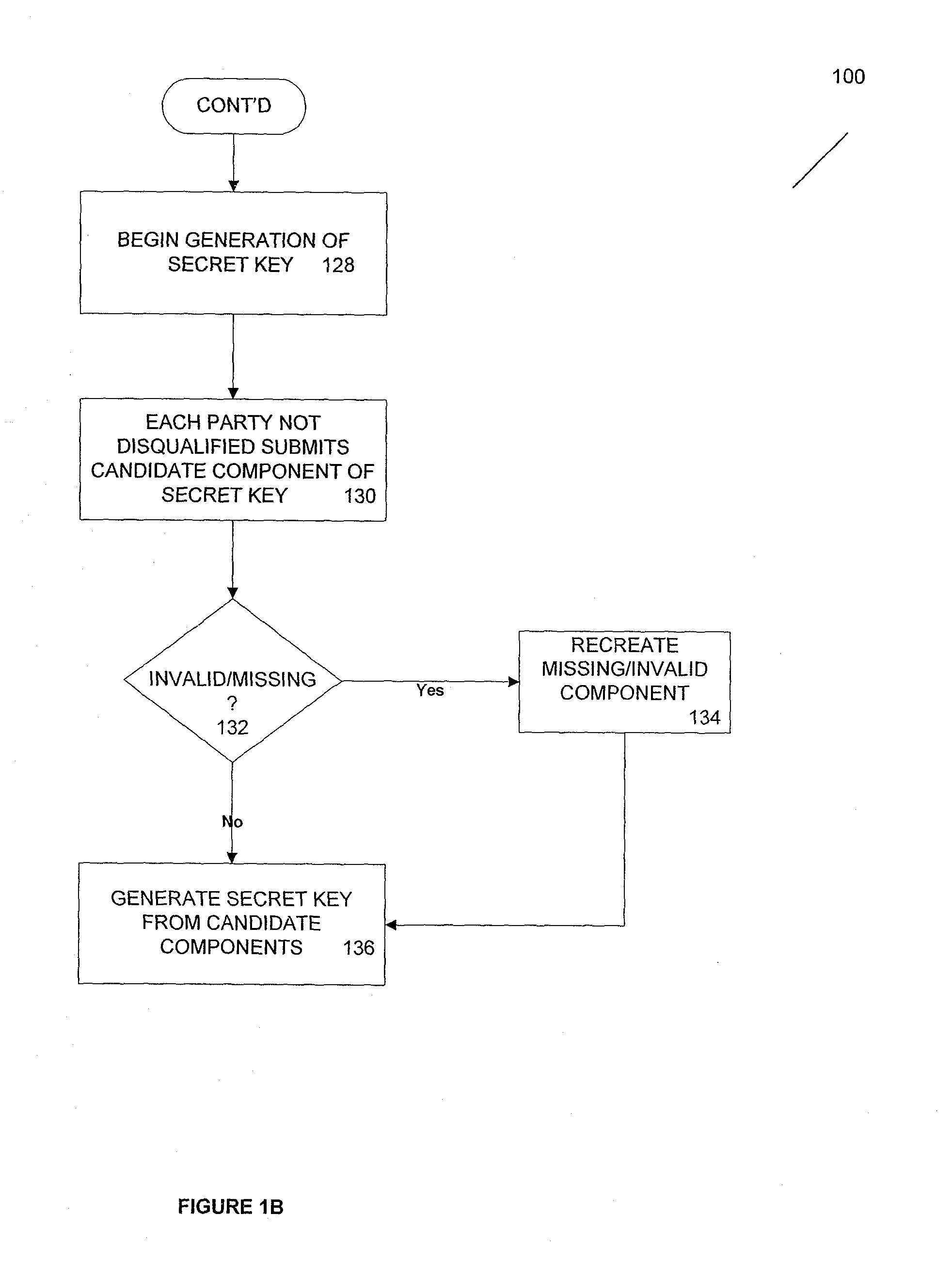Method and apparatus for time-lapse cryptography
a cryptography and time-lapse technology, applied in the field of time-based cryptographic encoding and decoding, can solve the problems of not having a fixed decryption, not being able to recover data, and not being able to achieve widespread acceptan
- Summary
- Abstract
- Description
- Claims
- Application Information
AI Technical Summary
Problems solved by technology
Method used
Image
Examples
Embodiment Construction
[0031]In one example, a setting for the service is as follows: At time T, Alice wishes to send Bob a message m so that Bob may decrypt it only at or after a specified future time (T+δ). This decryption will be possible without any further action by Alice.
[0032]According this example, the “Time-Lapse Cryptography Service” (“the Service”) makes this possible. At or before time T, the Service publishes a public key PK along with a statement that its corresponding secret key DK will be revealed at time T+δ. Alice uses PK to encrypt m with random help r using a probabilistic encryption scheme and sends the ciphertext c=EPK(m,r) to Bob. She is now committed to the content of the message, although Bob cannot yet see it. At time (T+δ), the Service reconstructs and publishes DK, which Bob obtains and uses to decrypt c and recover m. (Of course, Alice, if she so wishes, can always reveal m early by sending Bob m and r.)
[0033]Some examples of objectives of one implementation of the Service are...
PUM
 Login to View More
Login to View More Abstract
Description
Claims
Application Information
 Login to View More
Login to View More - R&D
- Intellectual Property
- Life Sciences
- Materials
- Tech Scout
- Unparalleled Data Quality
- Higher Quality Content
- 60% Fewer Hallucinations
Browse by: Latest US Patents, China's latest patents, Technical Efficacy Thesaurus, Application Domain, Technology Topic, Popular Technical Reports.
© 2025 PatSnap. All rights reserved.Legal|Privacy policy|Modern Slavery Act Transparency Statement|Sitemap|About US| Contact US: help@patsnap.com



